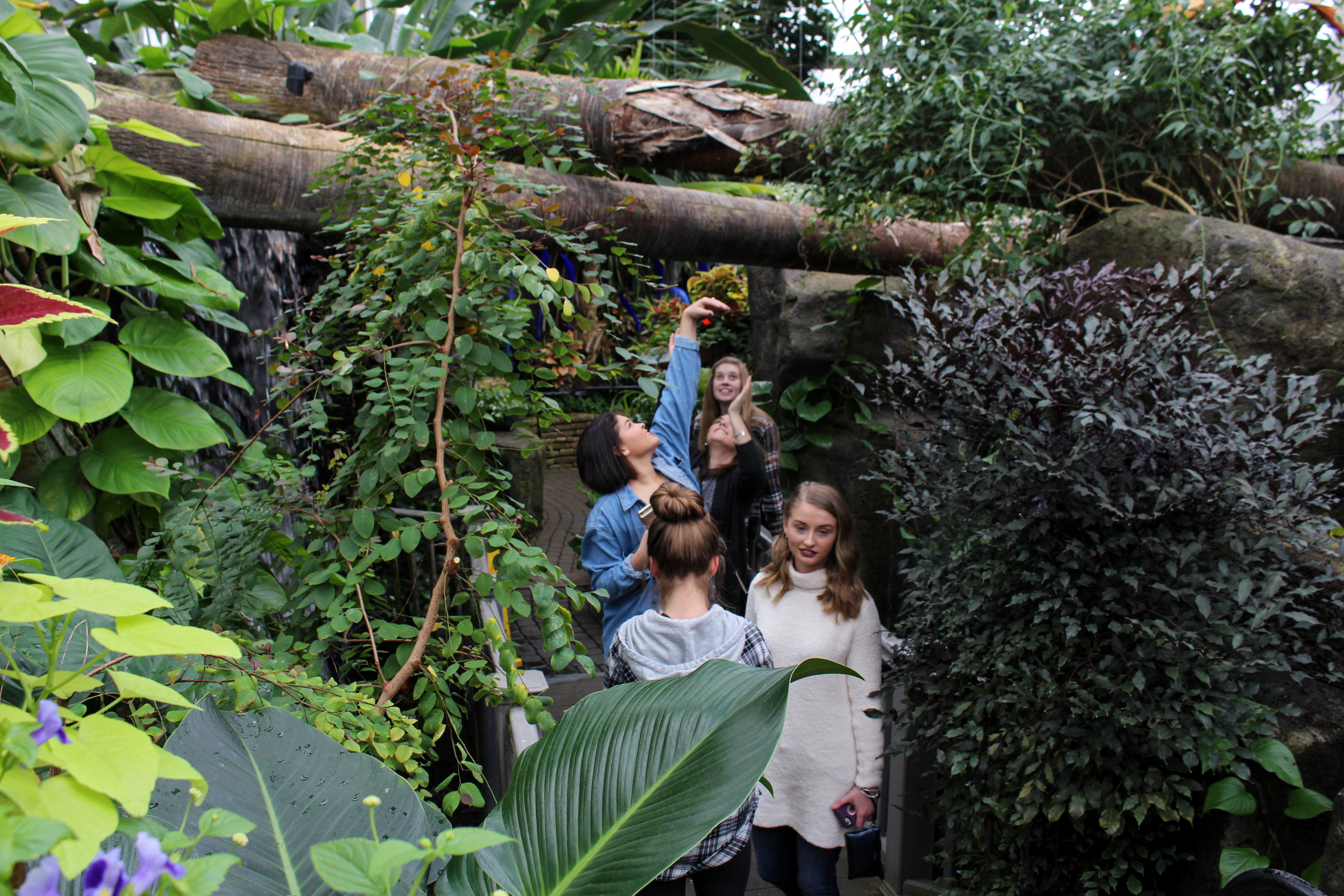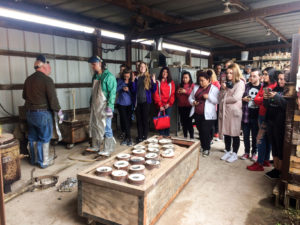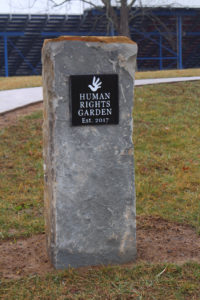
In today’s politically and socially charged environment, it can feel challenging to find positive outlets for children. However, Portsmouth City School students found inspiration in the United Nations Universal Declaration of Human Rights. They used their artful handiwork to instill themes of community, health and wellness and fundamental rights in a Human Rights Garden.
“I think it’s particularly important in our community. I mean I think that we have kids who really were unaware of what their basic human rights are,” Portsmouth High School art teacher, April Deacon says. “And I think it’s really important for people to be aware of those things so that they can protect them and their own rights and the rights of others.”
For a couple of years, Deacon had an idea for the Human Rights Garden, and had been applying for grants for years, but hadn’t received anything substantial enough to complete her vision. With the small grants she was awarded, she wouldn’t have been able to do much for the students.
During the first phase of the project, the Human Rights Garden will be initially comprised of an outdoor sculpture and a plant garden that will become permanent fixtures in the district. The garden broke ground in Applegate Green on September 21, 2016, and will be completed at the end of May 18, 2017.
Deacon got a phone call from the Ohio Arts Council that the school district had been selected for the TeachArtsOhio initiative. She was ready to pitch the idea to Donna Collins, the Executive Director of the Ohio Arts Council, because Deacon already had a proposal completed that she had been sending independently to other funding options.
“The phase one project and the TeachArtsOhio initiative is a pilot project, it’s only a two year project and it’s in its second year, so I hope that they turn it into a full project and we can continue to apply for money through them.” Deacon says.
The garden will occupy 50 feet of a green space located at the high school. If funding continues, the Human Rights Garden will be the first of a multi-dimensional learning program to increase overall wellness in children such as physical fitness areas, vegetable gardens and plant-based, outdoor art.
About the Art
Students from the elementary, middle and high school studying Science, Social Studies, Gifted Art, Woodshop, Buildings and Maintenance are all collaborating with their individualized skill sets to complete different portions of the project.
In September of 2016, eighth grade students completed an archaeological survey of the land in partnership with the Hopewell Culture National Historical Park.
The Social Studies students worked to grid the garden and sifted through found artifacts during the soil tagging process.
Deacon facilitates the partnership extensions for the three schools involved in the project and organizes field trips for students to learn from other educators across the state.
 The eighth grade students took a trip to the Southern Ohio Museum to view the Art of the Ancients exhibit to learn about objects and tools that were used by the Adena and Hopewell tribes that once lived in the Scioto river valley.
The eighth grade students took a trip to the Southern Ohio Museum to view the Art of the Ancients exhibit to learn about objects and tools that were used by the Adena and Hopewell tribes that once lived in the Scioto river valley.
Students in fourth grade also took a trip to Hopewell to learn about Native American cultures.
Human rights education
In addition to studying the United Nation’s Universal Declaration of Human Rights, students in the junior high and high school viewed a traveling performance on the lives of Anne Frank and Harriet Tubman to delve deeper into historical human rights issues of the past.
Some “topics” can be difficult to process depending on the grade level of the students; Deacon brings the meanings closer to home.
“It’s harder for them to understand things that are going on across the world, but they understand the drug epidemic that is surrounding us and poverty and things like that,” Deacon says.
Teachers in various subject areas can decide how they want to cover issues of human rights; some teachers have taken up coursework about refugees, Black History Month, and other overarching themes of human rights topics.
Though the material being covered academically is important, the critical conversations don’t often occur without strife-especially in the current political and social climate nationwide.
“It has been a challenge since the election…talking about human rights, there are very strong opinions, and there is anger, and there is frustration on both sides, and so that has definitely been challenging,” Deacon says.
Garden Specs
The entrance to the garden will feature the phrase, ‘I have the right to.’ The bricks the students have been working creating on will be shown along the pathways through the garden. The bricks include positive words relating to human rights, such as ‘Equality,’ ‘Safety,’ ‘Liberty’ and ‘Respect.’
 Some of the materials to be showcased in the garden have been molded from architecturally salvaged pieces of old buildings in the city.
Some of the materials to be showcased in the garden have been molded from architecturally salvaged pieces of old buildings in the city.
The prominent sculptures will be designed by the high school Three-Dimensional Art students as well as the seventh grade gifted students in the district; they took a trip to the University of Rio Grande to watch their designs become physical through lost-wax bronze casting.
Students studying building and maintenance will create benches for seating featuring tiles created by the Three-Dimensional Art students.
Students in the woodshop program will create the box molds for paper casting and tile casting for the Three-Dimensional Art students.
Creating a Sustainable Future
Garet Martin, a Horticulture Designer and former student of Deacon’s is partnering with the students as well as educators and designers from the Franklin Park Conservatory to learn about the importance of plants, ecosystems and select plants to be used in the garden.
Mark Miller, the Education Manager of the Franklin Park Conservatory, will be visited Jane Brandel’s 5th grade classroom on Fridays in March.
“Growing and eating healthy foods, together with knowledge about living a healthy lifestyle that is sustainable at the same time is valuable for every child, every person,” Miller says.
The educators will be working with students to select plants that are native to the region and to discern what the students can incorporate for a low-maintenance garden.
“We talked about a vegetable garden; I have many, many students who tell me they don’t eat vegetables. I think we could spur the focus on health and talking about nutrition and things that we could put in our own garden,” Deacon says.
The garden is a project that teaches students in and out of the classroom about topics that aren’t always on the curriculum.
“I think its really important in education to be moving in a direction where we are making these connections between art and science and social studies, I think that’s a much better way to learn than teaching to a test,” Deacon says.


